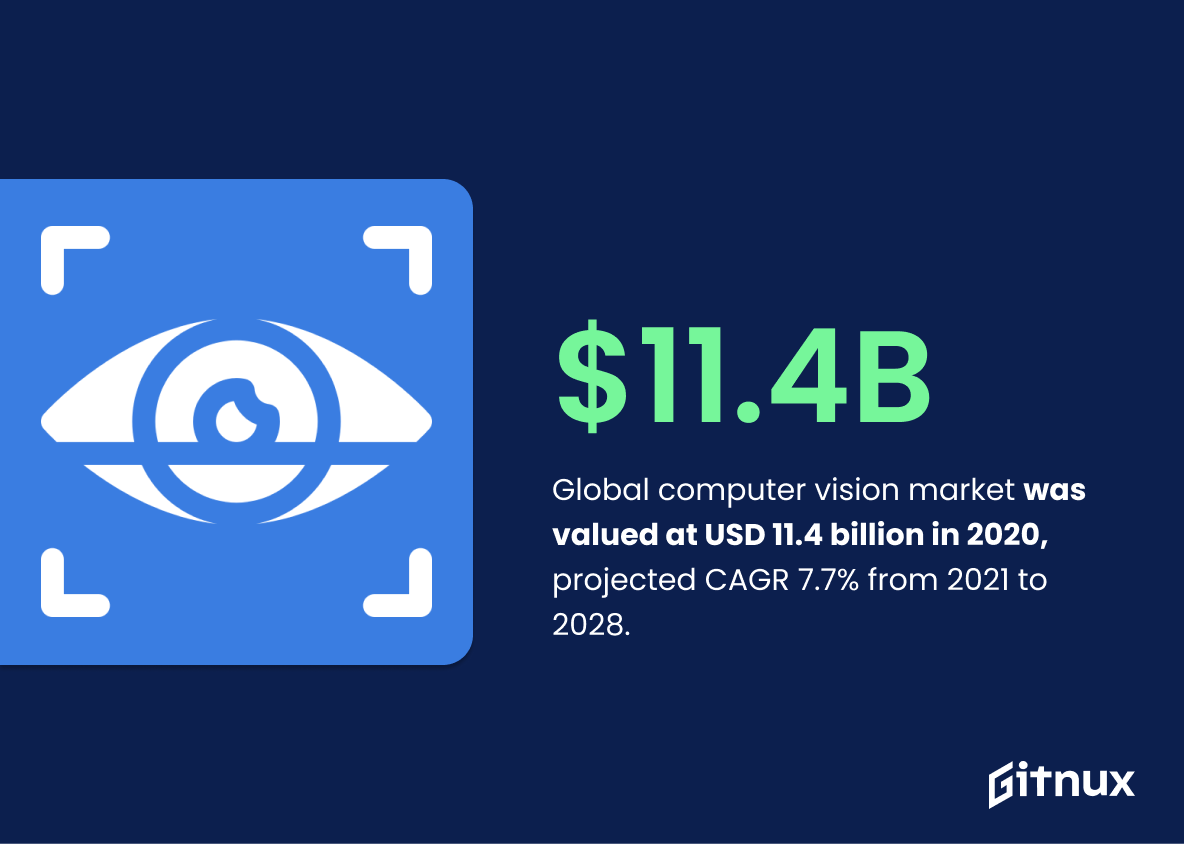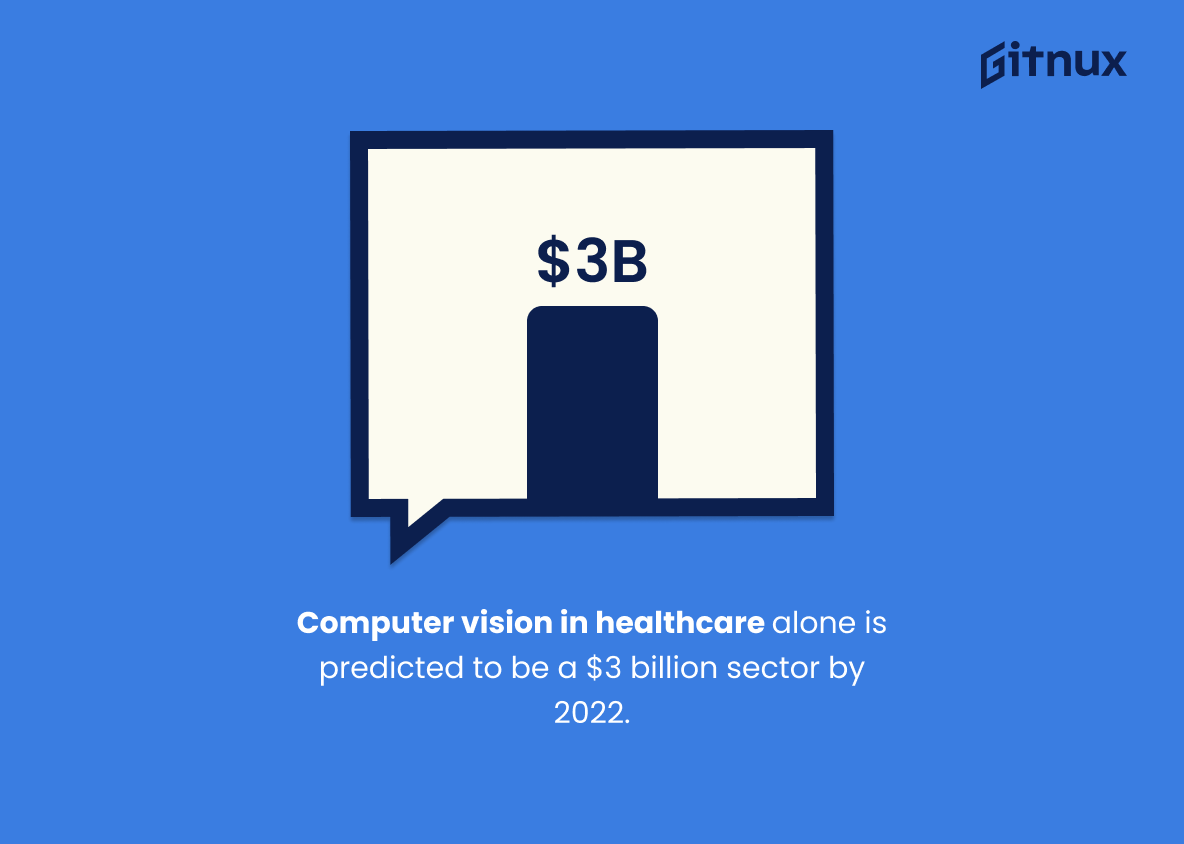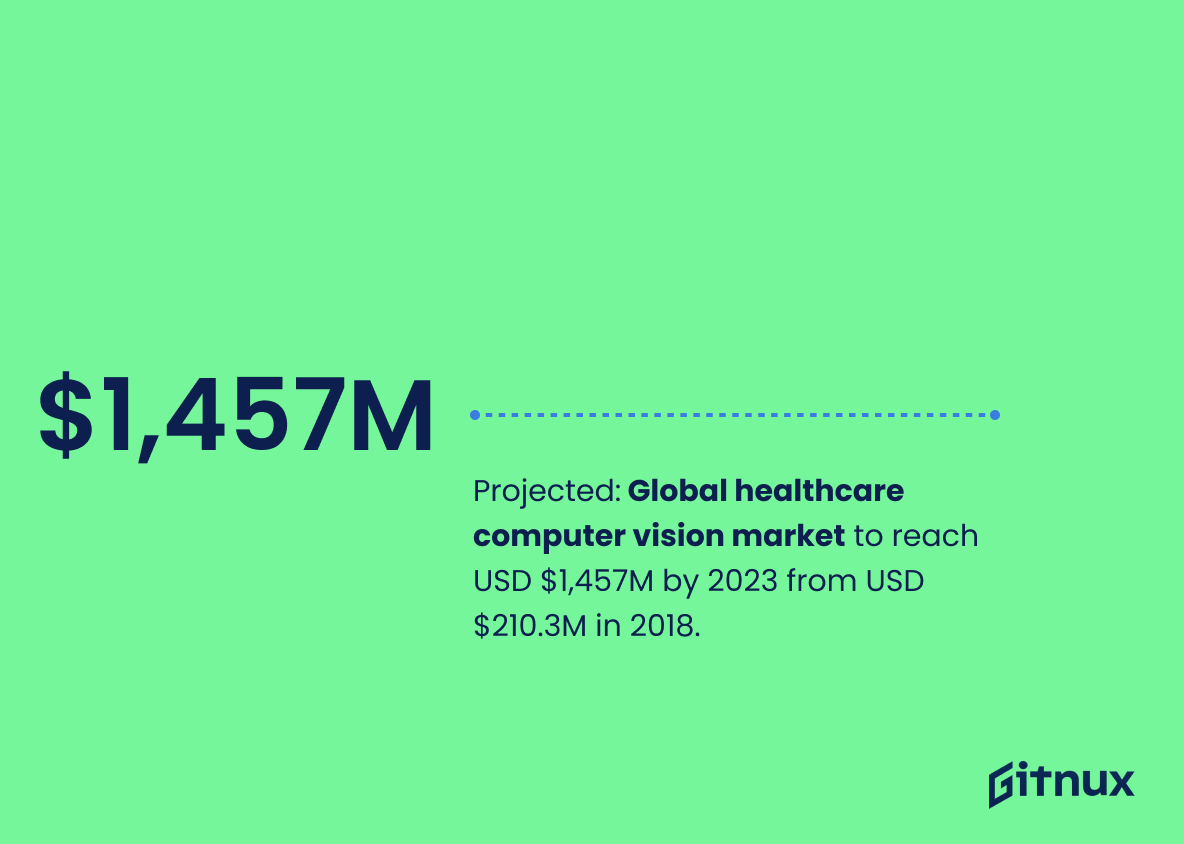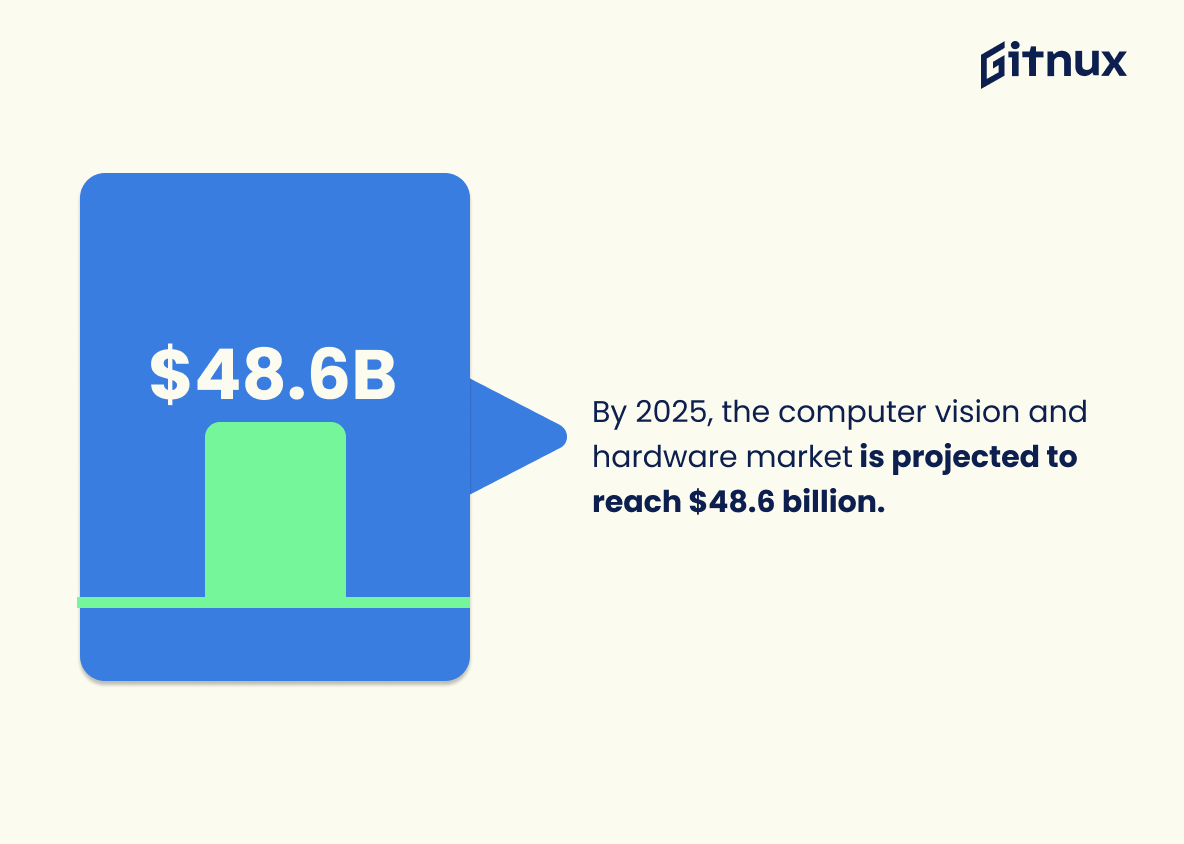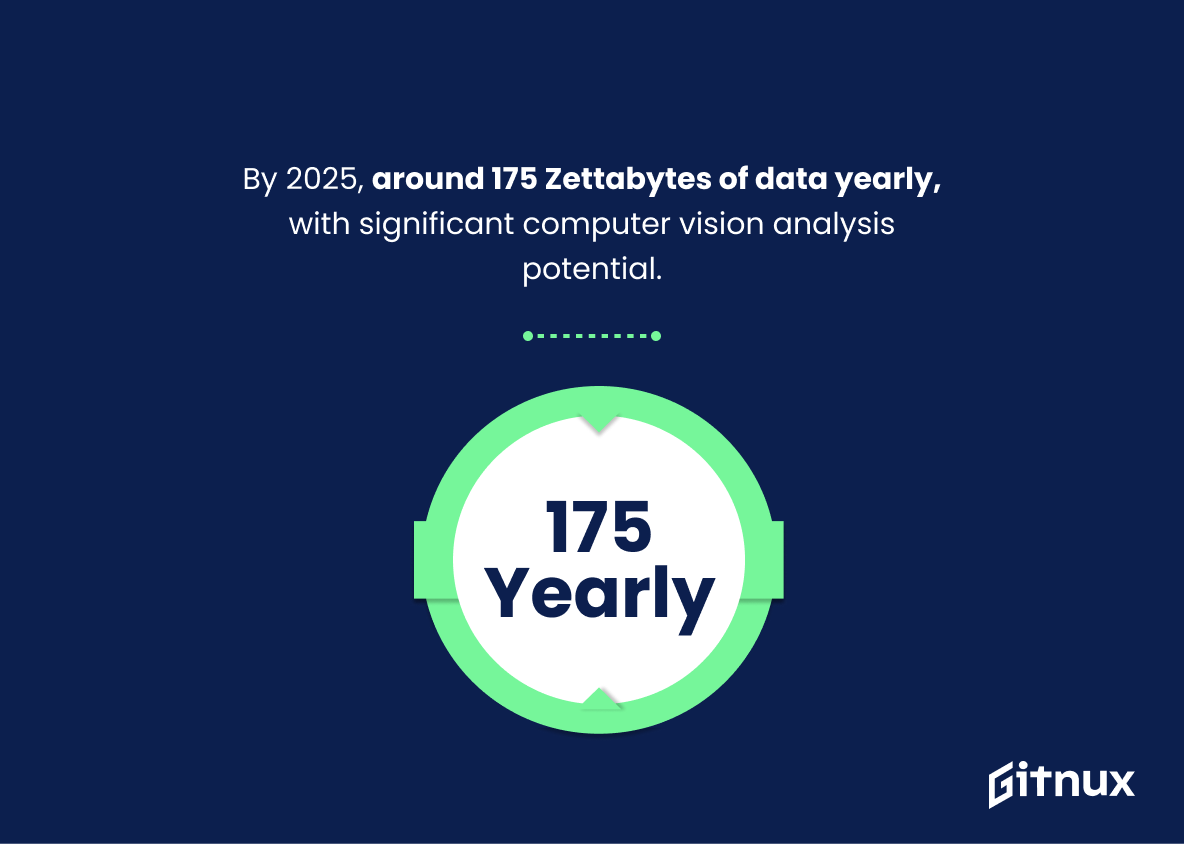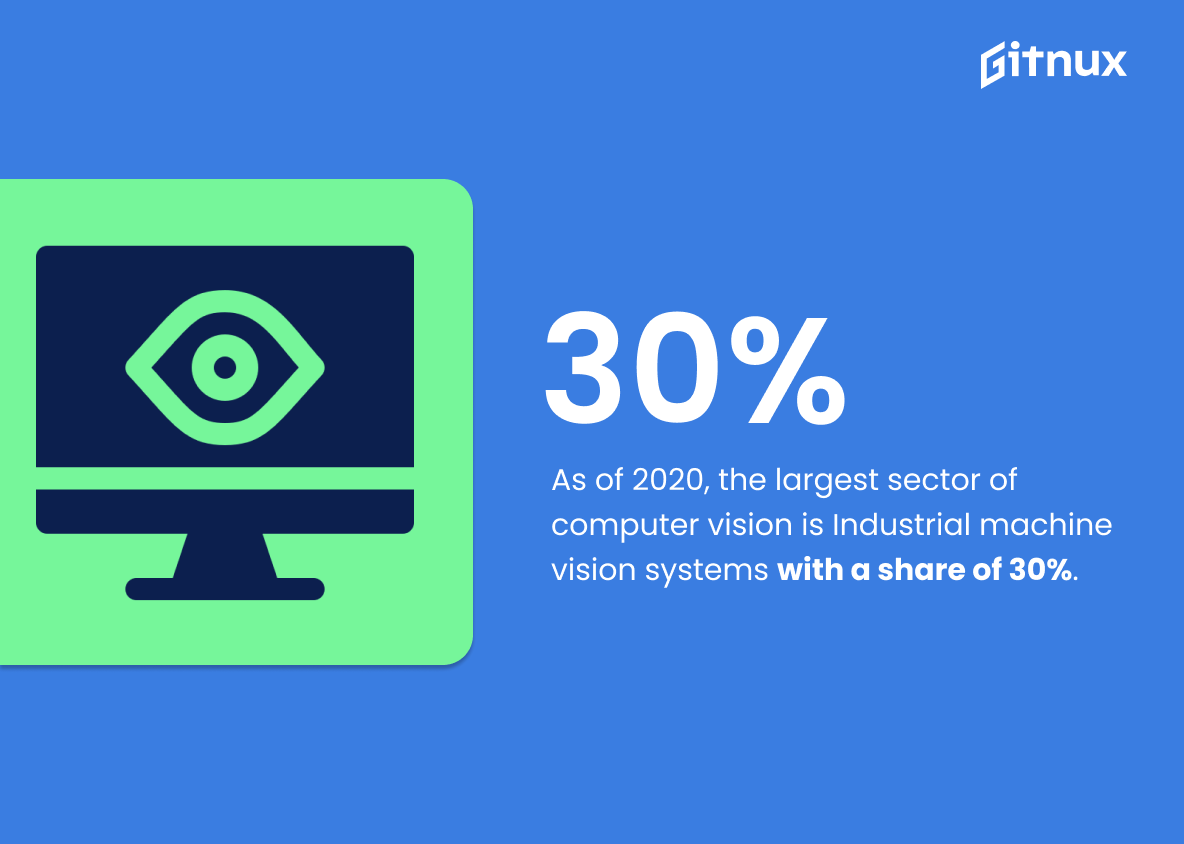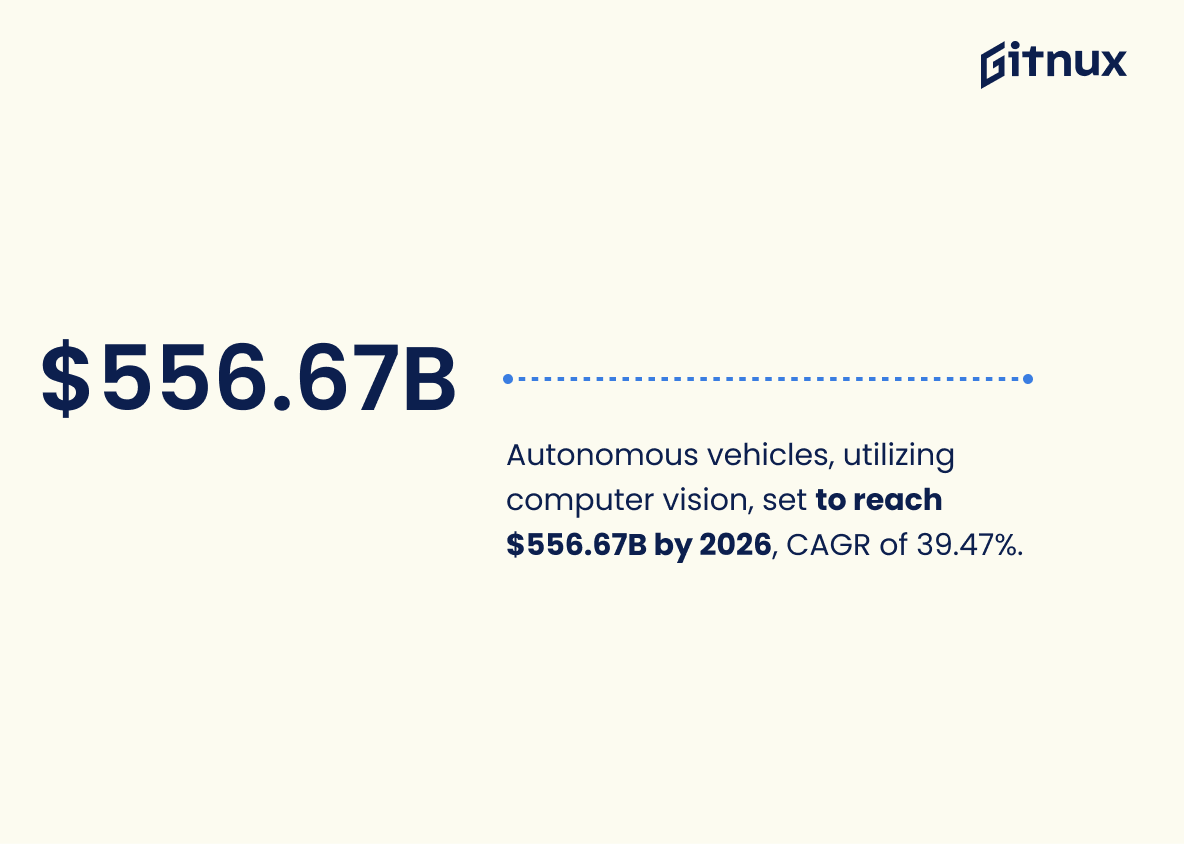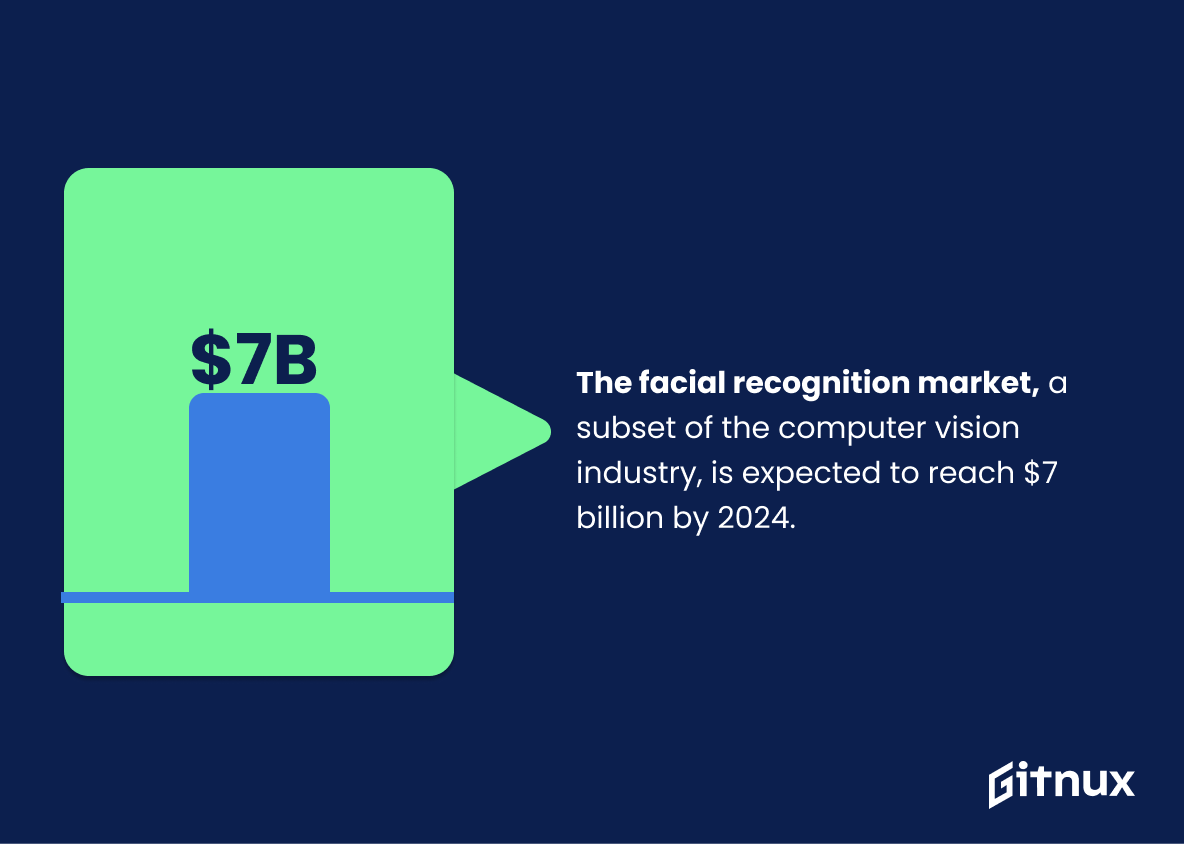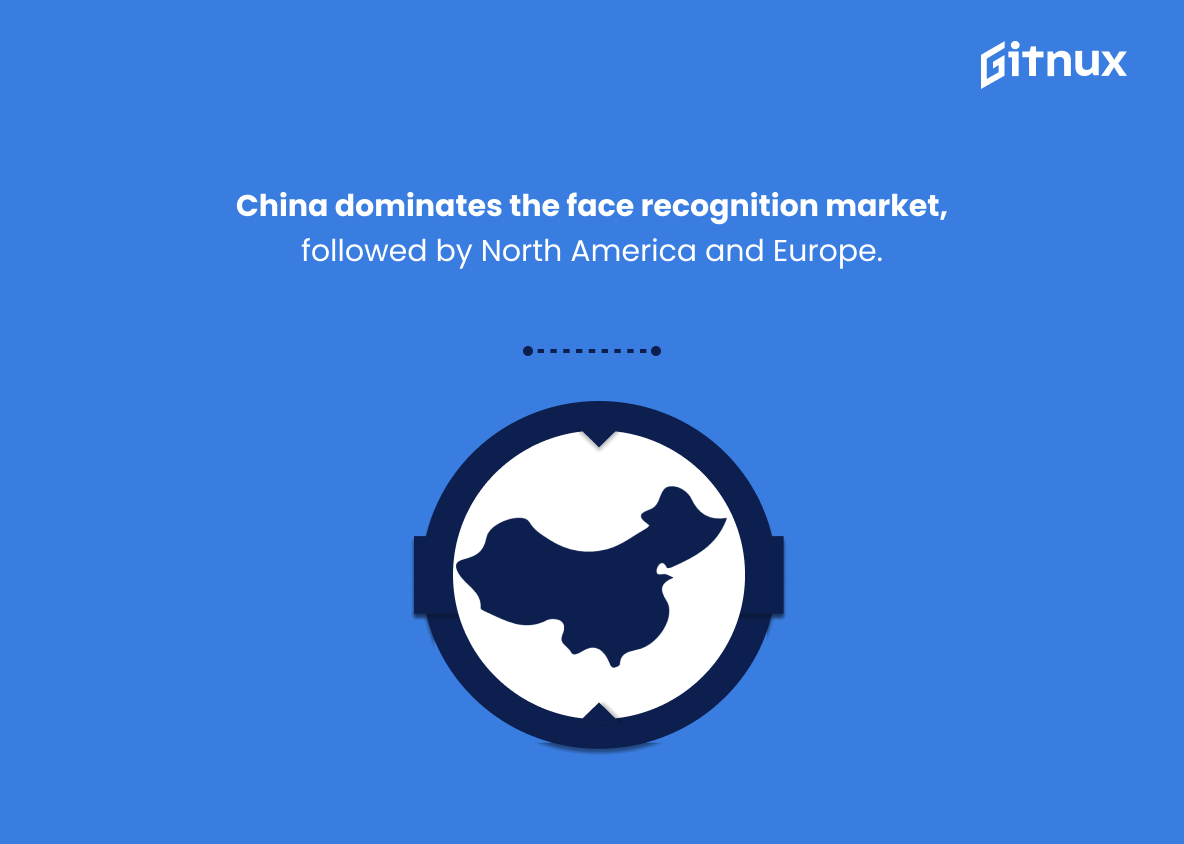In today’s tech-savvy world, computer vision has emerged as a revolutionary technology shaping numerous industries unlike ever before. This cutting-edge technology has gone beyond simply recognizing patterns and now plays a significant role in decision-making processes in diverse fields. Whether it’s healthcare, eCommerce, automotive, or security, the role of computer vision is undeniable.
This blog post aims to present an in-depth exploration into the burgeoning computer vision industry, backed by relevant statistics, current trends, potential growth predictions and its transformative impact across sectors. Brace yourself as we dive deep into the world of computer vision and unravel its promising significance in the digital age.
The Latest Computer Vision Industry Statistics Unveiled
The global computer vision market size was valued at USD 11.4 billion in 2020 and is expected to expand at a compound annual growth rate (CAGR) of 7.7% from 2021 to 2028. Source
Painting the panorama of the computer vision industry, this compelling statistic casts light on the evocative story of a vibrant sector, rapidly blossoming and showing no signs of slowing down. The stunning valuation of USD 11.4 billion in 2020 offers a formidable testament to the industry’s considerable worth, underlined by the proliferation of computer vision applications, ranging from healthcare to automotive sectors.
Journeying further down the rabbit hole, the expected compound annual growth rate (CAGR) of 7.7% from 2021 to 2028 doesn’t merely suggest, but rather gallops towards a future of robust expansion. This projected growth rate symbolizes a relentless march of advancement, underpinning the industry’s catalyzing transformation and potential to reshape various realms of the modern world.
In essence, with these numbers at the helm, we can discern the narrative of an industry poised for robust growth. This story of progress written in the language of data, therefore, forms an essential cornerstone in appreciating and comprehending the current trends, potentials, and future trajectory of the computer vision industry.
Computer vision in healthcare alone is predicted to be a $3 billion sector by 2022. Source
Highlighting this projection accentuates the surge and potential in the adoption of computer vision technology in the healthcare sector. This titanic perceived value of $3 billion by 2022 serves as an indisputable testament to the rapid integration and widespread application of computer vision in this industry, underpinning the colossal strides this technology is making.
Beyond general use, this conveys a specific rising trend within the healthcare industry, implicating possibilities for proficient machine-driven diagnostics, treatments and care. Consequently, this statistic forms an integral part of the narrative around the growth, potential, and impact of the computer vision industry.
The global computer vision in healthcare market is projected to reach USD $1,457 million by 2023 from USD $210.3 million in 2018. Source
Fused in the bedrock of this blog post on Computer Vision Industry Statistics is a potent indicator of growth and potential: a staggering surge from USD $210.3 million in 2018 to a predicted USD $1,457 million in 2023 in the global computer vision in healthcare market. This whopping increase doesn’t merely underscore the accelerating pace at which this technology is making inroads in healthcare, it also underscores an undeniable reality- that healthcare professionals and institutions worldwide are increasingly acclimating to and investing in computer vision solutions.
This rise in demand naturally opens up a galaxy of opportunities for established companies and startups alike in the computer vision sector. Whether the focus is on innovative development or investment opportunities, this statistical projection turns a spot light on a burgeoning field ripe with unexplored potential.
In addition, it also highlights the integral role computer vision is poised to play in the future of healthcare. This could range from enhanced disease detection to streamlined patient care, making its growth trajectory a topic of imperative relevance to healthcare providers and recipients alike.
In essence, any magnifying glass positioned over the Computer Vision Industry Statistics is bound to find this figure impossible to ignore as it signals an upcoming era of technological advancement in healthcare industry.
By 2025, the computer vision and hardware market is projected to reach $48.6 billion. Source
Drilling down into the immense sphere of the vast computer vision industry, this forecast is a signal flare, illuminating the projected colossal market value of $48.6 billion by 2025. This figure is an economic powerhouse and is an affirmation of the rocket-paced growth of the computer vision and hardware market.
Not only does it highlight the increasing global interest in and demand for advanced technology, but it also underlines the boundless opportunities for businesses, investors, and savvy pioneers in this sector. In essence, it is as if we are forecasting an incoming tide that is expected to rise considerably, reshaping the landscape of the industry and setting new benchmarks for success.
An estimated 175 Zettabytes of data will be generated annually by 2025, much of which can be analyzed by computer vision. Source
This staggering projection of 175 Zettabytes of data generation by 2025 acts as an undeniable testament to the expanding realm of digital data. The explosive growth of data creation, much of which will be amenable to computer vision analysis, serves as a barometer of the untapped potential and emerging opportunities within the computer vision industry.
An appreciable fraction of this data deluge is expected to be visual – think pictures, videos, or complex multi-dimensional data sets ripe for computer vision processing. This colossal surge in data availability will consequently necessitate sophisticated tools for efficient handling, interpretation, and application. Herein shines the role of computer vision technologies, designed to make sense of this visual data tsunami, aiding in decisions, predictions and even autonomous actions.
To put it into perspective, this eye-opening statistic paints a compelling picture of the industry’s predicted path. Given this, those involved in the computer vision industry could well be the gold miners in the impending data rush, wielding neural networks and algorithms instead of pickaxes and pans. In sum, this staggering data generation forecast suggests an exciting horizon of opportunity for the growth, diversification, and technological advancement of the computer vision industry.
As of 2020, the largest sector of computer vision is Industrial machine vision systems with a share of 30%. Source
Insight into the dominance of industrial machine vision systems in the computer vision sector, which constituted a sizeable chunk of 30% in 2020, offers a unique perspective when discussing Computer Vision Industry Statistics in a blog post. It paints an intriguing picture of the current realities and propensities shaping the industry.
Notably, it underscores the extent of the applications of AI-driven image recognition capabilities in the practical world of industrial automation and inspection – a dimension that has evolved to overshadow other branches of computer vision. Furthermore, this staggering statistic highlights which sectors are fast-adopting and nurturing technological innovations, thereby indicating potential trends and growth areas for both established companies and start-ups within the computer vision ecosystem.
Additionally, it serves as a valuable conversation starter on the rising demand for advanced automation solutions amidst the industrial space, subsequently encouraging readers to explore the underlying reasons, implications and future prospects interlinked to this mounting fascination with industrial machine vision systems.
In a nutshell, this statistic is a hard-hitting revelation, worth considering for anyone keen on understanding the sprawling landscape and multidimensional influence of computer vision in our interconnected world.
Computer vision applications in surveillance security sector are forecasted to see a CAGR of 22% from 2021 to 2028. Source
The dazzling projected growth rate of 22% signals an impending innovation boom, hinting at the flourishing demand in the surveillance security sector for computer vision applications. Between 2021 and 2028, this technological curve is expected to offer a montage of new business opportunities, revolutionary improvements in security standards, and increased efficiency in surveillance tasks. The statistic thus magnifies the importance of keeping a close eye on this sector, as it is rapidly becoming a game-changer in the Computer Vision Industry.
The autonomous vehicles sector, another user of computer vision, is expected to grow to $556.67 billion by 2026, with a CAGR of 39.47%. Source
In the realm of the Computer Vision industry, this particular statistic paints a potent forecast. Highlighting the vast potential, it foresees the autonomous vehicle sector, a prominent user of computer vision technology, amassing a monumental value of $556.67 billion by 2026.
This astronomical growth projects an impressive CAGR of 39.47%, sending strong signals about the accelerating integration of computer vision in this field. Consequently, it helps the readers appreciate the market dynamism and innovation pace within the industry, more so underscoring its future prominence amidst emerging technologies.
The facial recognition market, a subset of the computer vision industry, is expected to reach $7 billion by 2024. Source
Projected to rocket up to a monumental $7 billion by 2024, the booming market of facial recognition vividly illustrates the intense momentum and potential capacity of the broader computer vision industry. Fired by innovative advancements and escalating demands across varying sectors, this titanic surge functions as a clear testament to the sector’s soaring vitality.
This anticipation of rapid growth is an eloquent exposition in a comprehensive blog post about Computer Vision Industry Statistics as it embodies the imminent opportunities and dynamic growth path that this field is headed towards, thereby shedding light on the industry’s prosperity and relevance in a technologically evolving landscape.
China dominates the face recognition market, followed by North America and Europe. Source
Delving into the landscape of the Computer Vision Industry, it’s interesting to observe how China has carved a notable market stronghold, especially in the realm of face recognition technology. Their lead, followed by North America and Europe, is not just intriguing but speaks volumes about global technological advancement trends and innovation hotspots.
This crucial piece of statistical data is noteworthy in roundabout ways. Firstly, it underscores China’s significant strides in developing advanced AI-driven technologies, hinting at the region’s prevailing research and business focus. It also showcases the comparative pace at which North America and Europe are navigating this technological wave, shedding light on future potential growth areas in these regions.
Global tech magnates, investors, and entrepreneurs can leverage this data to identify competition, collaboration opportunities, and even strategize market investment for maximum yield. Moreover, it illuminates a significant ‘technological divide’ in the world, providing a crucial perspective on how advanced and emerging economies are progressing in the AI sector.
Significantly, in the larger context of data privacy, security, and norms, this statistic may also ignite informed debates and policies stretching beyond tech realms. Therefore, this small piece of data holds myriads of intriguing implications, narrating the unfolding global AI story from different angles.
The computer vision-based military market is predicted to reach $6.41 billion by 2025. Source
Highlighting the projected value of the computer vision-based military market gives a glimpse of the potential financial impact and significant growth of this technology in a prominent sector. It paints an impressive picture of the commercial potential and lucrative prospects of the industry.
Beyond market value, it also subtly emphasizes how pivotal computer vision technology is becoming in strategic areas like military operations. Furthermore, this prediction sets the tone for understanding the degree of investment, research and development being propelled into this industry, whilst also indicating lucrative opportunities for entrepreneurs and investors.
Nearly 60% of organizations are considering the adoption of computer vision in the next year. Source
With an eye towards the competitive edge, a salient point to underscore is that approximately 60% of organizations are mulling over integrating computer vision into their operations within the forthcoming year. Such a number is a testament to the growing prominence of this technology across various industries, heralding a dynamic shift in the way businesses operate.
This fundamentally underlines the burgeoning importance of understanding this trend, whether you’re an industry player, investor, or tech enthusiast. This expansive adoption of computer vision technology gives us a sneak peek into an imminent future where automation, accuracy, and efficiency are not just optional but essential pillars of organizational success. Not only does this statistic indicate the escalating demand and acceptance of computer vision, but it also provides an insight for stakeholders to prepare, adapt, and stay ahead in the race.
More than 3,500 companies have computer vision mentioned in their corporate documents.
Source
The irresistible rise of digital technology paints an interesting tapestry for the modern era and at its vibrant center appears to be the waft and weft of computer vision. The vibrant echo of over 3,500 companies incorporating computer vision into their corporate documents signals a compelling narrative of a futuristic global landscape. This punctiliously highlights the aggressive embrace and leaning in of the corporate sphere towards computer vision. Not only does it underscore a fervent industry growth but it also speaks volumes about the strategic projection and trust that companies lay on this technology.
The figure substantiates the claim that computer vision will no longer be an esoteric piece. Instead, it’s transitioning into a must-have technology, poised to become ubiquitous across varied businesses and industries. It quantitatively and qualitatively illustrates the volume of engagement and the seriousness with which computer vision is perceived in the corporate world. Such a figure planted in a blog post about Computer Vision Industry Statistics, crafts an immerse visual of how this digital adeptness is steadily transforming the business landscape.
The global computer vision for AR and VR market is expected to grow with a CAGR of 50% from 2021 to 2026.
Source
Peering ahead into the landscape of the Computer Vision Industry, the statistic showcasing an anticipated 50% CAGR for the global AR and VR market from 2021 to 2026, sparks noticeable excitement. It paints an image of a financial tsunami churning in the oceans of technology, ready to engulf the industry with an enormous wave of growth.
The blog post itself becomes a guide, churning this wave into an intelligible forecast, allowing readers to explore potential market changes and identify future opportunities in the realm of AR and VR. In a nutshell, this growth estimate serves as a compass in the wild sea of possibilities within the computer vision industry.
Retail is expected to reach 1.44 Billion USD in 2025, at a CAGR of 23.6% for visual search and augmented reality.
Source
Highlighting this robust prediction catapults the importance of Computer Vision in the retail sector. The anticipated reach of $1.44 Billion USD by 2025 underlines the accelerated gravitation of retailers towards visual search and augmented reality, indicating a projected CAGR of 23.6%. Such remarkable figures unmask the potential of computer vision technologies in reshaping the future of the retail industry.
The proliferation of these technologies further suggests a transformative ebb in consumer behavior and in-depth market insights, making this a cornerstone statistic in a blog post on Computer Vision Industry. It not only gathers attention to the vast revenue potential but also underscores the fast-paced adoption and market growth.
Europe is expected to register a CAGR of 7.0% between 2019 and 2025.
Source
This exciting statistic paints an illuminating picture for stakeholders in the Computer Vision Industry. Europe’s expected CAGR of 7.0% from 2019 to 2025 signifies a vibrant and rapidly growing market. For tech entrepreneurs, big corporations and investors alike, it signals unrivaled opportunities for expansion, innovation, and profit generation.
This healthy growth rate underpins the potential of the European market in becoming a hotbed for cutting-edge Computer Vision developments, influencing global technological advancement. Stakeholders can leverage this prospective growth, aligning their strategies and resources to tap into this emergent techno-economic hero to create value and ensure robust returns.
Conclusion
The computer vision industry is witnessing a dynamic increase in its statistical figures, illustrating the significant impact it has on our modern world and its promising future. From industry applications to everyday uses, computer vision technology is redefining the way we live and work, leading to increased efficiency and groundbreaking developments.
Stay abreast with these industry statistics as they rapidly evolve, as understanding them is integral to any tech-savvy business. It’s exciting to conceptualize the heights this technology will reach in the forthcoming years, unlocking untold potential and opportunities. Keep an eye on the computer vision industry; its future undoubtedly holds fascinating revelations.
References
0. – https://www.www.prnewswire.com
1. – https://www.emerj.com
2. – https://www.www.globenewswire.com
3. – https://www.www.valuates.com
4. – https://www.newdata.ai
5. – https://www.www.marketsandmarkets.com
6. – https://www.www.grandviewresearch.com
7. – https://www.searchenterpriseai.techtarget.com
8. – https://www.www.abiresearch.com
9. – https://www.www.visualcapitalist.com
10. – https://www.www.marketdataforecast.com
11. – https://www.www.meticulousresearch.com
